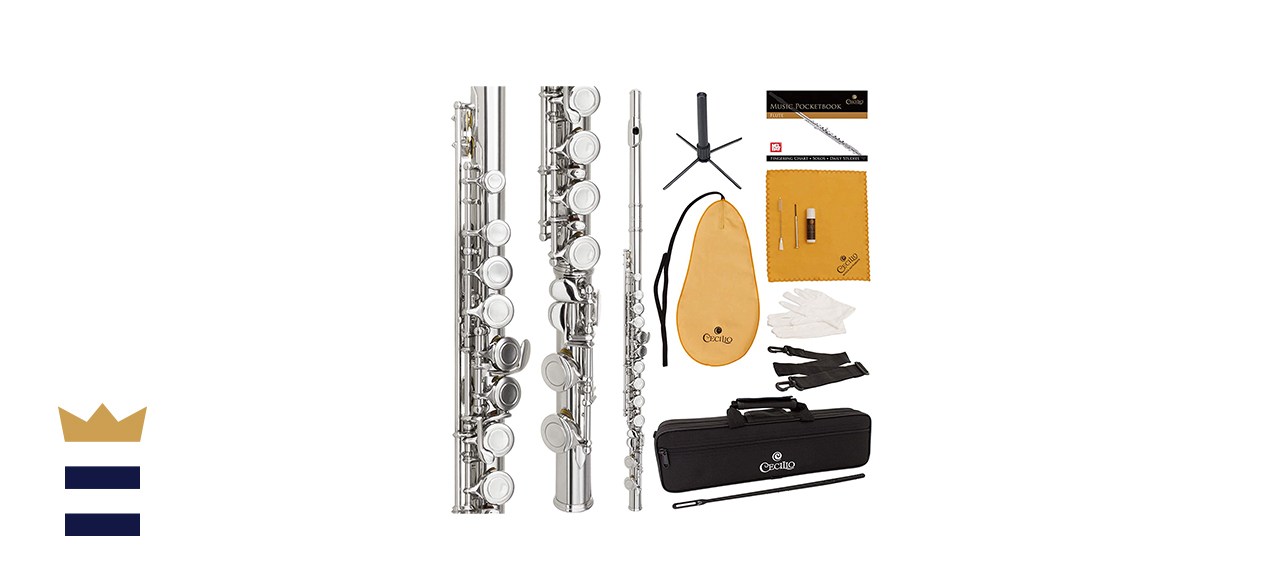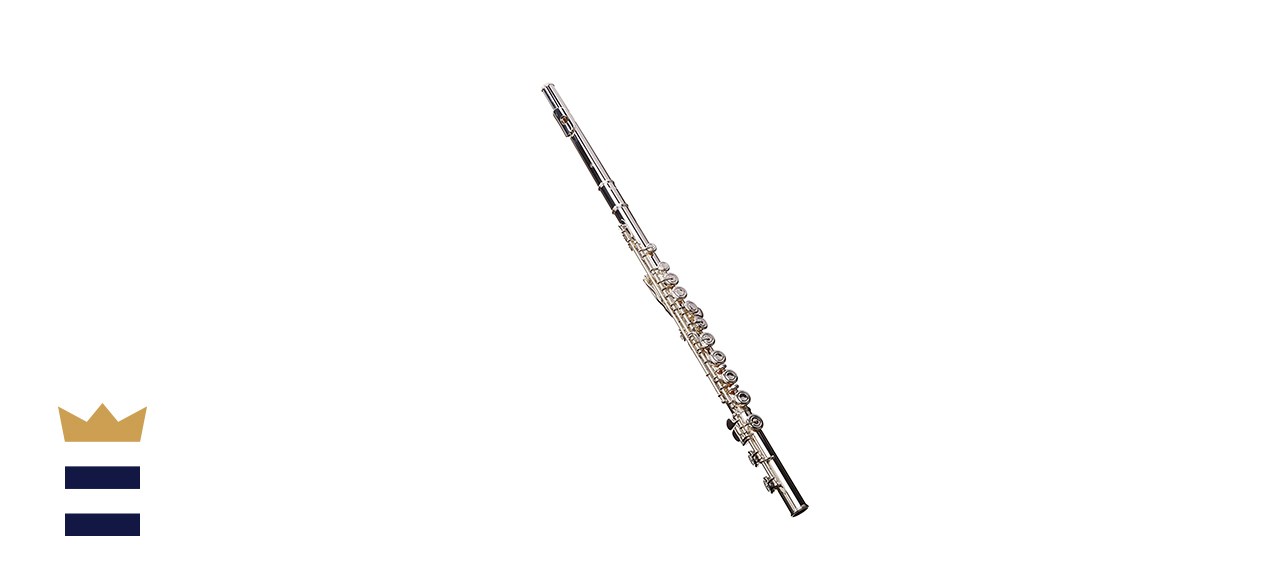Which flutes are best?
Lightweight and portable, the flute is a popular instrument famous for its versatility and distinctive tone. It’s also thought to be the oldest instrument in history, with examples of its use dating back to paleolithic times.
Learning the flute requires patience and discipline, and choosing the right one can be a daunting task. Whether you’re new to the instrument or you’ve been playing for years, the Pearl Quantz Series Flute is the top pick for its clear tone and durability.
What to know before you buy a flute
Parts of a flute
While the ancient flute used a single piece of bone or wood, the modern instrument is usually made from silver and consists of three separate parts.
- Headjoint: The headjoint includes the lip plate and embouchure. This is where the player will place their lip and blow to create sound.
- Bodyjoint: The most extended section of the instrument, the bodyjoint contains most of the keys.
- Footjoint: The footjoint is the smallest part of the flute and you can find it in C or B varieties. A “C foot” is standard for most student flutes and allows the instrument to reach a low C, whereas a “B foot” allows a low B and improves the flute’s overall pitch.
Skill level
Consider your skill level before investing in a flute. If you’re a beginner, you might want to purchase a student flute. These instruments are typically closed-hole and feature an offset G key for comfortable playing. For more information about student flutes, check out the flutes for beginners buying guide from BestReviews.
Intermediate flutes are commonly used by experienced players and are well-suited for performances. These instruments are usually made from solid silver and feature an open-hole style and inline G key, delivering great control over intonation.
Artisan flutes are handcrafted, precision-made and commonly reserved for professional flutists and composers. These can be crafted from a wide variety of materials and typically feature pointed key arms.
What to look for in a quality flute
Open-hole vs. closed-hole
The keys on an open-hole flute have venting holes that give the player greater control over intonation. Closed-hole flutes have solid keys, making them better suited for beginners. Open-hole flutes are also known as French-style flutes, while closed-hole flutes are sometimes called plateau-style.
Offset G keys vs. inline G keys
This detail refers to the placement of the G key on the instrument. As the name might suggest, inline G keys are in a straight line with the rest of the keys on the flute, while offset G keys are slightly offset from the other keys. The offset positioning allows greater comfort and flexibility, making offset G keys better suited for players with small hands.
Y-arm vs. pointed key
Key arms are the metal pieces that attach the keys to the flute. Most student and intermediate flutes use dapped or Y-arm keys, while certain high-end flutes use pointed key arms. You can recognize these by the pointed metal that extends to the center of the key. Pointed key arms are more durable and higher quality than Y-arm keys, but the difference is negligible on most modern flutes.
How much you can expect to spend on a flute
The price of a flute can vary dramatically depending on the type you want to purchase. Student flutes are $100-$800 and intermediate flutes are $800-$2,000, while a handcrafted artisan flute can exceed $50,000.
Flute FAQ
Is it hard to learn the flute?
A. The flute is a relatively easy instrument to learn. It boasts a simpler design than other woodwinds, and the small frame means it’s easier to familiarize yourself with the location of the keys. However, technical aspects like breath control and finger dexterity can prove challenging for some players.
How do I maintain my flute?
A. After each practice session or performance, take your flute apart and wipe down all of the components with a cloth so that everything stays dry and oil-free. You can also purchase a silver polishing cloth to get rid of any tarnishing.
What’s the best flute to buy?
Top flute
What you need to know: This beautiful, silver-plated flute is perfectly suited for beginners and experienced musicians alike.
What you’ll love: This model has pointed key arms and uses open-hole, offset G keys and a B footjoint to deliver consistently professional sound and intonation control. It also comes with a case and cleaning rod.
What you should consider: While this versatile flute is suited for most skill levels, the relatively steep price puts it out of reach for many beginners.
Where to buy: Sold by Amazon
Top flute for the money
What you need to know: This flute package is loaded with everything you need to start playing at a remarkably low price.
What you’ll love: This affordable instrument is nickel-plated with a closed-hole design. The flute comes with an assortment of extras, including a stand, carrying case, cleaning cloth, adjustable screwdriver and performance gloves. The package also comes with a 1-year warranty.
What you should consider: This simple flute was built solely for beginners, which means you’ll eventually need to upgrade to a higher-quality instrument as you develop your skills.
Where to buy: Sold by Amazon
Worth checking out
Yamaha Intermediate Student Flute
What you need to know: This nickel-silver flute is perfectly suited for beginners but balanced enough to play for years without needing to upgrade.
What you’ll love: Boasting a C footjoint, pointed key arms and an offset G design, this flute produces a clear tone and accurate intonation. Yamaha also offers a 1-year warranty on this model.
What you should consider: A bit pricier than other student flutes, this instrument is perhaps better suited for beginners than intermediate players.
Where to buy: Sold by Amazon
Sign up here to receive the BestReviews weekly newsletter for useful advice on new products and noteworthy deals.
Patrick Farmer writes for BestReviews. BestReviews has helped millions of consumers simplify their purchasing decisions, saving them time and money.
Copyright 2021 BestReviews, a Nexstar company. All rights reserved.




